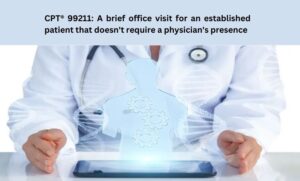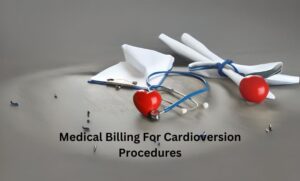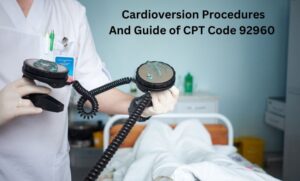The International Classification of Diseases, Tenth Revision (ICD-10), is a medical coding system used worldwide to diagnose and classify diseases and conditions. Within this system, the category G89 represents “Pain, not elsewhere classified.” This category encompasses a wide range of pain conditions that don’t have a more specific code assigned elsewhere in the ICD-10 code.
What Does G89 Include?
G89 acts as a catch-all category for various pain presentations that lack a dedicated code. Some examples of conditions that might fall under G89 include:
- Chronic pain of unknown origin
- Postoperative pain (if not specified as acute)
- Musculoskeletal pain (if not localized to a specific joint or region)
- Neuropathic pain (if not associated with a specific nerve injury)
- Phantom limb pain
It’s important to note that G89 serves as a temporary placeholder until a more specific diagnosis can be established. Physicians should strive to identify the underlying cause of the pain whenever possible and use a more precise code for accurate documentation and coding.
Subcategories within G89
The G89 category itself has further subcategories to provide more details about the nature of pain:
- G89.0: Central pain syndrome (e.g., thalamic pain syndrome)
- G89.1: Acute pain:
- G89.11: Acute pain due to trauma
- G89.12: Acute post-thoracotomy pain (pain after chest surgery)
- G89.18: Other acute postprocedural pain (pain after other procedures)
- G89.2: Chronic pain:
- G89.21: Chronic pain due to trauma
- G89.22: Chronic post-thoracotomy pain
- G89.28: Other chronic postprocedural pain
- G89.29: Other chronic pain (unspecified)
- G89.3: Neoplasm-related chronic pain (pain caused by cancer)
Understanding these subcategories allows for more specific coding within the broad category of G89.
When to Use G89
Here are some scenarios where using G89 might be appropriate:
- A patient experiences chronic back pain, but the specific cause is yet to be determined.
- A patient reports generalized abdominal pain after a routine surgery, and a specific source cannot be identified.
- A patient complains of phantom limb pain following an amputation.
However, if a more specific diagnosis is available, it’s crucial to utilize the appropriate code rather than relying on G89. For instance, if a patient has pain localized to the knee joint due to osteoarthritis, the code for osteoarthritis of the knee (M17.xx) would be used instead of G89.
Importance of Accurate Coding
Accurate coding using ICD-10 is essential for several reasons:
- Improved Communication: Precise codes facilitate clear communication between healthcare providers, insurance companies, and public health agencies.
- Reimbursement: Insurance companies rely on ICD-10 code to determine reimbursement for medical services. Using the correct code ensures proper payment for healthcare services provided.
- Public Health Monitoring: ICD-10 data is used to track the prevalence of diseases and conditions, which helps in resource allocation and disease prevention strategies.
Beyond G89: Exploring Related ICD-10 Topics
While the core focus remains on G89, here are some additional topics you can explore to expand the article and reach the desired word count:
- Common Pain Syndromes with Specific ICD-10 Code: Discuss frequently encountered pain conditions like headaches, migraines, and back pain, along with their corresponding ICD-10 code.
- The Coding Process for Pain: Explain the thought process behind choosing an ICD-10 code for pain conditions, emphasizing the importance of considering factors like location, duration, and underlying cause.
- Challenges and Best Practices in Pain Coding: Explore the challenges associated with pain coding, such as the subjective nature of pain and the lack of specific codes for certain pain types. Offer best practices for accurate and efficient pain coding.
Common Pain Syndromes with Specific ICD-10 Code
As we move beyond the general category of G89, let’s delve into some frequently encountered pain syndromes with their corresponding ICD-10 code. This will provide a more practical understanding of how pain is classified within the ICD-10 system.
- Headaches:
- Migraine: G43 (further sub categorized based on migraine type)
- Tension-type headache: G44.0
- Cluster headache: G44.20
- Facial Pain:
- Trigeminal neuralgia: G50.1
- Temporomandibular joint dysfunction (TMJ): G89.10 (if acute) or M17.9 (if chronic)
- Back Pain:
- Low back pain: M54.5 (further sub categorized based on cause)
- Cervicalgia (neck pain): M54.2 (further sub categorized based on cause)
- Neuropathic Pain:
- Diabetic neuropathy: G63.0 (further subcategorized based on location)
- Post-herpetic neuralgia (pain after shingles): G53.1
- Arthritis-Related Pain:
- Osteoarthritis of the knee: M17.xx (further subcategorized based on severity)
- Rheumatoid arthritis: M05 (further subcategorized based on joint involvement)
- Abdominal Pain:
- Acute abdominal pain: R10.0 (further investigation needed for specific diagnosis)
- Chronic abdominal pain: K59.9 (unspecified abdominal pain).
Also Read:
- Key aspects of ICD-10 Medical Coding Guidelines
- 7 Pillars of Healthcare & Medical Billing and Coding
- Medical Billing and Coding Certification
Conclusion
Understanding and accurately applying ICD-10 code for pain is essential for effective communication within the healthcare system, proper insurance reimbursement, and public health surveillance. While the G89 category serves as a catch-all for unclassified pain presentations, a vast array of specific codes exist for various pain syndromes. Healthcare providers can ensure accurate pain coding by considering factors like location, duration, underlying cause, and associated symptoms. Furthermore, staying updated on ICD-10 guidelines and utilizing EHR functionalities can significantly enhance coding efficiency and accuracy.









